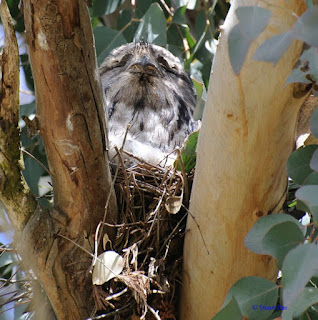
Tawny frogmouth study - 7
The first tawny frogmouth chicks hatched about two weeks ago and it is only now that they can be seen as they have become too large for the bird to cover completely all the time as they wriggle around in the nest. The male bird broods them all day, drooping his wings over them. This hides their white down from the roving eyes of predators, such as currawongs, and protects them from excessive heat from the sun, or the cool wind and rain - which there has been much of in Canberra since they hatched.





